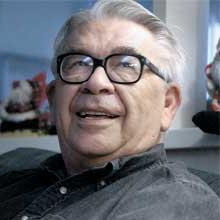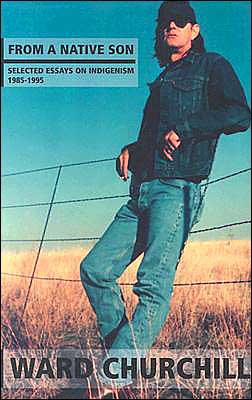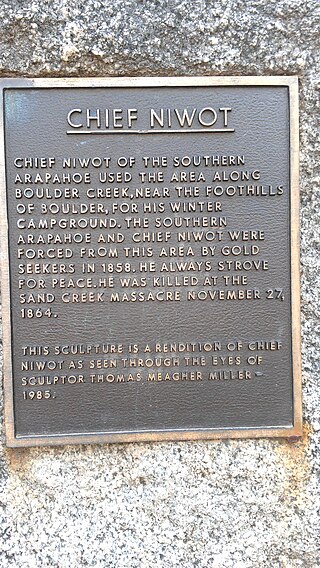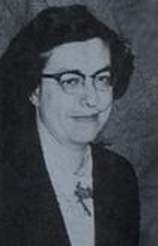
The American Indian Wars, also known as the American Frontier Wars, and the Indian Wars, were initially fought by European governments and also by the colonists in North America, and later by the United States government and American settlers, against various American Indian tribes. These conflicts occurred in the United States from the time of the earliest colonial settlements in the 17th century until the end of the 19th century. The various wars resulted from a wide variety of factors, the most common being the desire of settlers and governments for Indian tribes' lands. The European powers and their colonies also enlisted allied Indian tribes to help them conduct warfare against each other's colonial settlements. After the American Revolution, many conflicts were local to specific states or regions and frequently involved disputes over land use; some entailed cycles of violent reprisal.

George Hanks "Hank" Brown is an American politician and lawyer from Colorado. He is a former Republican politician and U.S. Senator. He served as the president of the University of Northern Colorado from July 1998 to June 2002, and later as the 21st president of the University of Colorado system from April 2005 to January 2008.
The American Indian Movement of Colorado, also called AIM-International Confederation of Autonomous Chapters, is a breakaway group from the American Indian Movement.

Vine Victor Deloria Jr. was an author, theologian, historian, and activist for Native American rights. He was widely known for his book Custer Died for Your Sins: An Indian Manifesto (1969), which helped attract national attention to Native American issues in the same year as the Alcatraz-Red Power Movement. From 1964 to 1967, he served as executive director of the National Congress of American Indians, increasing its membership of tribes from 19 to 156. Beginning in 1977, he was a board member of the National Museum of the American Indian, which now has buildings in both New York City and in Washington, DC, on the Mall.

The United Keetoowah Band of Cherokee Indians in Oklahoma is a federally recognized tribe of Cherokee Native Americans headquartered in Tahlequah, Oklahoma. According to the UKB website, its members are mostly descendants of "Old Settlers" or "Western Cherokee," those Cherokee who migrated from the Southeast to present-day Arkansas and Oklahoma around 1817. Some reports estimate that Old Settlers began migrating west by 1800, before the forced relocation of Cherokee by the United States in the late 1830s under the Indian Removal Act.

Struggle for the Land: Native North American Resistance to Genocide, Ecocide and Colonization is a book by Ward Churchill. It is a collection of essays on the efforts of Native Americans in the United States and in Canada to maintain their land tenure claims against government and corporate infringement. Equating colonization with genocide and ecocide, the author provides examples of resistance.

From a Native Son: Selected Essays on Indigenism, 1985–1995 is a 1996 book by Ward Churchill. It is a collection of 23 previously published essays on various topics relevant to the indigenous peoples of the Americas in relation to their experience of being colonized. It is introduced by Howard Zinn.

Kill the Indian, Save the Man: The Genocidal Impact of American Indian Residential Schools is a 2004 book by the American writer Ward Churchill, then a professor at the University of Colorado Boulder and an activist in Native American issues. Beginning in the late 19th century, it traces the history of the United States and Canadian governments establishing Indian boarding schools or residential schools, respectively, where Native American children were required to attend, to encourage their study of English, conversion to Christianity, and assimilation to the majority culture. The boarding schools were operated into the 1980s. Because the schools often prohibited students from using their Native languages and practicing their own cultures, Churchill considers them to have been genocidal in intent.

The Indian Peaks Wilderness is a wilderness area in north central Colorado managed jointly by the United States Forest Service and the National Park Service within the Arapaho and Roosevelt National Forests and small parts of the southern section of Rocky Mountain National Park. It borders the James Peak Wilderness to the south, and straddles the Continental Divide. The area receives high visitation due to its proximity to the Denver metropolitan area.

Andrea Lee Smith is an American academic, feminist, and activist. Smith's work has primarily focused on issues of violence against women of color and their communities, specifically Native American women. Formerly an assistant professor of American Culture and Women's Studies at the University of Michigan in Ann Arbor, Michigan, she is also a co-founder of INCITE! Women of Color Against Violence, the Boarding School Healing Project, and the Chicago chapter of Women of All Red Nations.
The 1837 Great Plains smallpox epidemic spanned 1836 through 1840 but reached its height after the spring of 1837, when an American Fur Company steamboat, the SS St. Peter, carried infected people and supplies up the Missouri River in the Midwestern United States. The disease spread rapidly to indigenous populations with no natural immunity, causing widespread illness and death across the Great Plains, especially in the Upper Missouri River watershed. More than 17,000 Indigenous people died along the Missouri River alone, with some bands becoming nearly extinct.

Chief Niwot or Left Hand(-ed) was a Southern Arapaho chief, diplomat, and interpreter who negotiated for peace between white settlers and the Cheyenne and Arapaho tribes during the Pike's Peak Gold Rush and Colorado War.
A Little Matter of Genocide: Holocaust and Denial in the Americas 1492 to the Present (1997) is a book which was written by Ward Churchill. A Little Matter of Genocide surveys ethnic cleansing from 1492 to the present. Churchill compares the treatment of North American Indians to historical instances of genocide by communists in Cambodia, Turks against Armenians, and Europeans against the Gypsies, as well as Nazis against the Poles and Jews.
This is a list of writings published by the American author Noam Chomsky.
Andrew Schelling, is an American poet and translator.

Roxborough State Park Archaeological District is located in Douglas County, Colorado. Roxborough State Park, 25 miles (40 km) south of Denver, Colorado, is a Colorado State Park day park. Archaeological artifacts reflect that there were prehistoric hunter-gatherers who lived or camped, made tools from stone quarries, and farmed in the Roxborough State Park area.

The Jones-Miller Bison Kill Site, located in northeast Colorado, was a Paleo-Indian site where Bison antiquus were killed using a game drive system and butchered. Hell Gap complex bones and tools artifacts at the site are carbon dated from about ca. 8000-8050 BC.

This is a bibliography of the U.S. State of Colorado.

Helen Peterson was a Cheyenne-Lakota activist and lobbyist. She was the first director of the Denver Commission on Human Relations. She was the second Native American woman to become director of the National Congress of American Indians at a time when the government wanted to discharge their treaty obligations to the tribes by eliminating their tribal governments through the Indian termination policy and forcing the tribe members to assimilate into the mainstream culture. She authored a resolution on Native American education, which was ratified at the second Inter-American Indian Conference, held in Cuzco, Peru. In 1986, Peterson was inducted into the Colorado Women's Hall of Fame and the following year, her papers were donated to the Smithsonian's National Anthropological Archives and they are now held at the National Museum of the American Indian.















